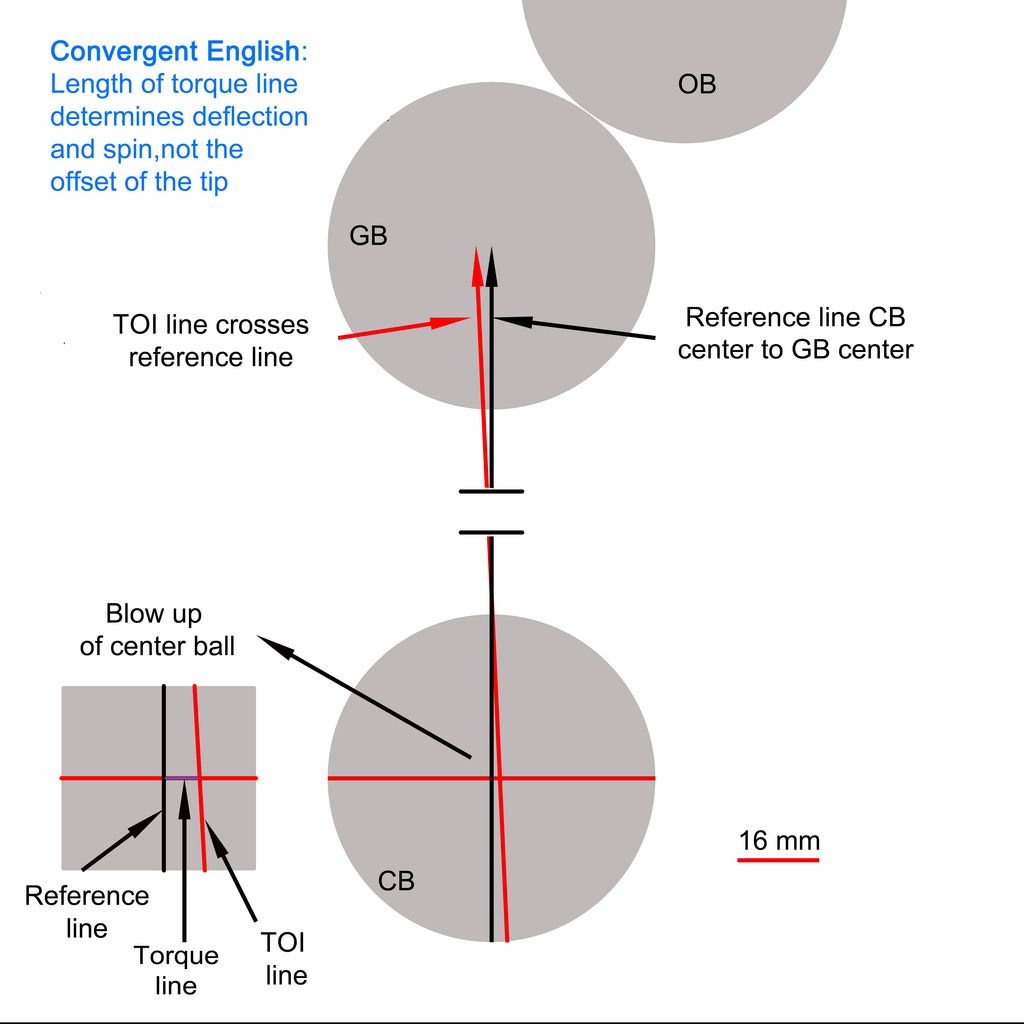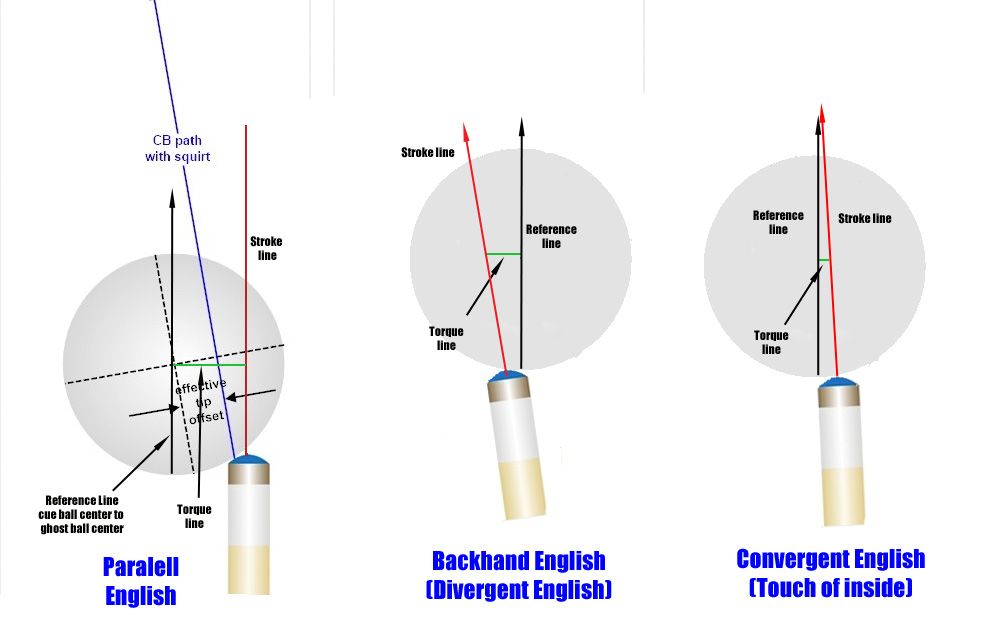If you go back over what CJ has said about this over the years it is like a blind man describing an elephant. He has described a parallel shift. But I believe that is only a teaching method to illustrate how deflection can be used to change the angle.
He has described what amounts to a pivot as well, when he is describing how he actually addresses the ball when he is shooting (not when he is teaching).
Member imac007 has discussed this in several posts but the description is perhaps so technical that not many have picked up on the essence of it. I reviewed his information, corresponded with him, looked back at much of the data Dr. Dave has produced related to the impact of inside vs outside spin on object ball throw (CJ essentially removes both squirt and swerve from the equation by exactly repeating the former and shooting with enough velocity reduce the impact of swerve).
But there is an additional thing that he does. Based on all this, I came up with a drawing to describe what imac calls "convergent side", and after much study and review of the many conflicting statements by CJ, we think it is what is being applied when properly addressing using TOI. I have not seen this described before and would hope that some of the more technically, mechanically inclined members might chime in with thoughts about how "convergent side" might impact the outcome of a shot.
The cue ball is struck slightly inside the reference line (CB center to GB center), but does not cross the reference line inside the CB, but rather down the shot line between the CB and OB. The distance between shot line and the reference line determines the magnitude of the applied English, NOT the parallel distance from center to cue contact point on the surface of the cue ball.




